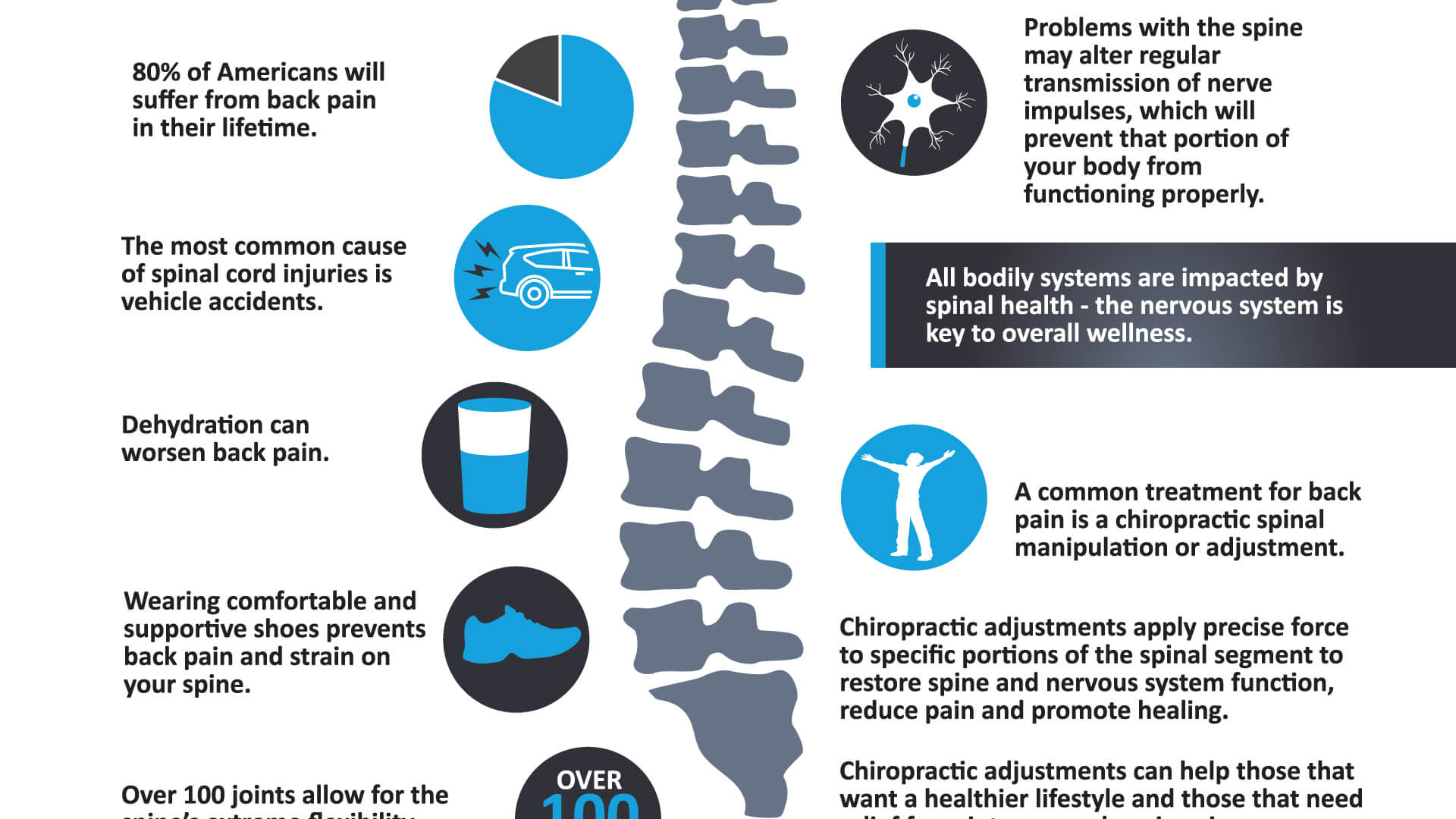Regular Tasks That Contribute To Neck And Back Pain And Ways To Prevent Them
Regular Tasks That Contribute To Neck And Back Pain And Ways To Prevent Them
Blog Article
Post Developed By-Cates Dempsey
Maintaining appropriate pose and preventing typical risks in everyday tasks can considerably impact your back wellness. From exactly how you sit at your workdesk to just how you lift heavy things, little adjustments can make a large difference. Think of a day without the nagging back pain that hinders your every move; the option may be less complex than you assume. By making a few tweaks to your everyday practices, you could be on your method to a pain-free existence.
Poor Posture and Sedentary Lifestyle
Poor stance and a less active way of life are two major factors to back pain. When you slouch or suspicion over while resting or standing, you placed unnecessary pressure on your back muscles and spine. This can lead to muscle inequalities, tension, and ultimately, persistent pain in the back. Additionally, sitting for extended periods without breaks or exercise can damage your back muscles and cause tightness and pain.
To combat bad position, make a conscious effort to rest and stand directly with your shoulders back and straightened with your ears. Bear in mind to keep your feet flat on the ground and avoid crossing your legs for prolonged periods.
Incorporating routine extending and strengthening workouts into your everyday regimen can likewise help boost your posture and ease pain in the back associated with a sedentary way of life.
Incorrect Training Techniques
Inappropriate training techniques can considerably contribute to back pain and injuries. When you lift heavy things, bear in mind to bend your knees and utilize your legs to lift, as opposed to relying upon your back muscle mass. Stay nyc migraine treatment of turning your body while lifting and keep the object near your body to reduce pressure on your back. It's important to maintain a straight back and prevent rounding your shoulders while raising to avoid unnecessary pressure on your back.
Always evaluate the weight of the object prior to lifting it. If it's also hefty, request for aid or use equipment like a dolly or cart to deliver it securely.
Keep in mind to take breaks during lifting tasks to provide your back muscles an opportunity to relax and prevent overexertion. By carrying out correct lifting strategies, you can avoid neck and back pain and minimize the risk of injuries, guaranteeing your back stays healthy and balanced and strong for the long term.
Lack of Normal Exercise and Extending
A less active lifestyle without routine workout and extending can considerably contribute to pain in the back and discomfort. When you don't participate in physical activity, your muscles come to be weak and inflexible, leading to bad position and enhanced stress on your back. Regular exercise assists strengthen the muscular tissues that sustain your spinal column, boosting security and minimizing the danger of pain in the back. Including stretching into your routine can also boost flexibility, preventing tightness and discomfort in your back muscles.
To stay clear of pain in the back triggered by a lack of workout and extending, aim for a minimum of half an hour of moderate physical activity most days of the week. Include exercises that target your core muscles, as a solid core can assist reduce pressure on your back.
Furthermore, take breaks to extend and relocate throughout the day, especially if you have a workdesk work. Basic stretches like touching your toes or doing shoulder rolls can assist relieve tension and protect against neck and back pain. Focusing on routine exercise and extending can go a long way in maintaining a healthy back and minimizing pain.
Final thought
So, bear in mind to stay up right, lift with your legs, and remain active to stop neck and back pain. By making look at here now to your day-to-day practices, you can stay clear of the pain and restrictions that include pain in the back. Care for your back and muscular tissues by exercising excellent stance, appropriate lifting methods, and routine workout. Your back will certainly thank you for it!
